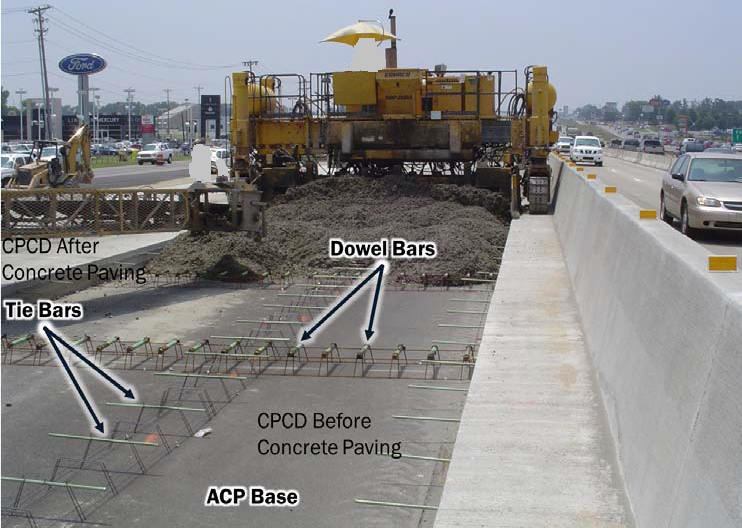1.1 Rigid Pavement Types
Different pavement types use different types of joints and reinforcement to control the forces acting on the concrete pavement. These forces include drying shrinkage of the concrete, environment changes, and traffic loads. Forces due to shrinkage and environment changes are large enough in the concrete pavement to cause cracks to form without any traffic loading.
The designer can select the location where the joints will be placed and, consequently, where the cracks will form. Joints may be thought of as “controlled cracks” that will reduce the stresses the concrete will experience during its life and greatly increase the life of the concrete pavement. Through the use of reinforcement, the location and spacing of cracks can also be controlled.
Two types of concrete pavements commonly used in Texas are continuously reinforced concrete pavement (CRCP) and concrete pavement contraction design (CPCD), which is also called jointed concrete pavement (JCP).
1.1.1 Continuously Reinforced Concrete Pavement (CRCP)
CRCP contains both longitudinal and transverse steel. CRCP does not contain transverse joints except at construction joints. Figure 8-1 shows the typical reinforcing steel layout for CRCP.
The function of the longitudinal steel is not to strengthen the concrete slab, but to control concrete volume changes due to temperature and moisture variations and to keep transverse cracks tightly closed. The function of the transverse steel is to keep longitudinal joints and cracks closed. If the steel serves its proper function and keeps cracks from widening, aggregate interlock is preserved and concrete stresses in the concrete slab due to traffic loading are reduced.
The CRCP thickness design is detailed in Section 2,
, and Section 3,
. Steel reinforcement and other design details are governed by the CRCP standards. The latest CRCP standards can be obtained from the department’s internet website at the following address:
.
Some districts have district-wide CRCP standards.

Figure 8-1. Continuously Reinforced Concrete Pavement.
1.1.2 Concrete Pavement Contraction Design (CPCD)
CPCD has transverse joints spaced at regular intervals. The transverse joints are used to control temperature-induced contraction and expansion in the concrete. Smooth dowel bars are used at the transverse joints for load transfer. The transverse joints are spaced at 15 ft. intervals. Longitudinal joints are used to control random longitudinal cracking. Longitudinal joints are tied together with tie bars. Figure 8-2 shows the typical layout for CPCD.
The thickness design of CPCD is detailed in Section 2,
, and Section 4,
. Other CPCD details are governed by the concrete pavement contraction design (CPCD) standards that can be obtained from the department's internet website at the following address:
.

Figure 8-2. Concrete Pavement Contraction Design.